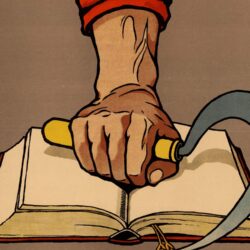Economic Inequality and Political Power (Part 2 of 3)
In my previous post I discussed the lack of government responsiveness to the middle-class and the poor, when their policy preferences diverge from those of the affluent. This inequality is pervasive: I found no circumstances during the decades I examined in which the middle-class had as much influence as the well-off, or the poor as much influence as the middle-class. Although pervasive, representational inequality does fluctuate. When the balance of power between the two major parties is close and when presidential elections loom, policy corresponds more closely to the preferences of the public, and more equally to the preferences of the more- and less-advantaged.
 The hopeful side of this observation is that democratic institutions do work, to an extent, to discipline policymakers and bring policy outcomes more in line with the public’s desires. But these periods of heightened responsiveness are the exception, not the rule, and it appears that policies “forced” on decision makers by political circumstances fare less well over time than those adopted under less “coercive” conditions. Although policies adopted during presidential election years are more consistent with public preferences, they are also more likely to lose funding over time than are policies adopted in other years of the quadrennial election cycle (thanks to Will Howell for supplying these data on funding levels).
The hopeful side of this observation is that democratic institutions do work, to an extent, to discipline policymakers and bring policy outcomes more in line with the public’s desires. But these periods of heightened responsiveness are the exception, not the rule, and it appears that policies “forced” on decision makers by political circumstances fare less well over time than those adopted under less “coercive” conditions. Although policies adopted during presidential election years are more consistent with public preferences, they are also more likely to lose funding over time than are policies adopted in other years of the quadrennial election cycle (thanks to Will Howell for supplying these data on funding levels).
The power of partisan competition to produce policy that is more consistent with public preferences leads to some unexpected patterns. For example, the strong Democratic party dominance of the Johnson years did not result in policies that were, on the whole, consistent with the preferences of any income group. True, some of the central and vitally important components of the Great Society, such as Medicare and federal aid to education, were extremely popular among lower income Americans and only modestly less so among the affluent. But Americans strongly opposed other domestic policies including much of the war on poverty, immigration reform, and the Vietnam war tax surcharge (not to mention the declining support for the administrations’ escalation of the war itself).
In contrast, the close election in 2000 and the even partisan division in congress during the first years of GW Bush’s administration brought policymaking that was unusually consistent with public preferences. The Medicare drug benefit, the No Child Left Behind education reforms, Bush’s “faith based initiative,” and the income and estate tax reductions were all quite popular among low and high income Americans alike, as were the early years of the Afghan and Iraq wars. Public support for some of these policies may have rested on misinformation (e.g., the Iraq war) or poor judgment, but as I argue in Affluence & Influence, Americans were not, for the most part, duped into wildly inaccurate beliefs about these policies.
….
Read the rest of this article at The Monkey Cage
by Martin Gilens
Read Related Articles
Economic Inequality and Political Power (Part 1 of 3)
Beyond the Randomised Controlled Trial































































































